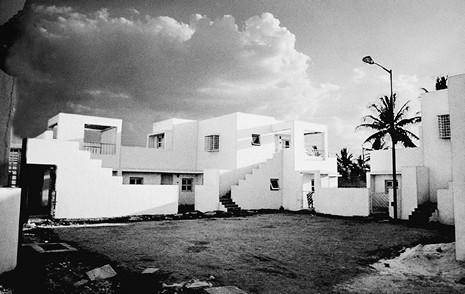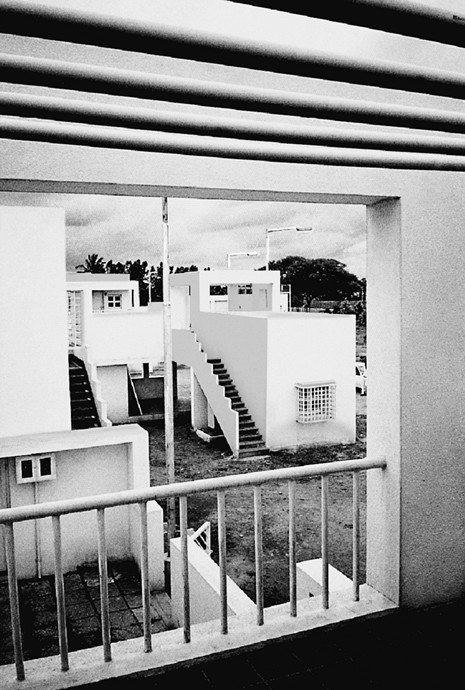Description
These quite small residential units for married and unmarried employees of the most highly esteemed scientific research institute in India are part of the entire research complex in a wide-open natural space. They illustrate the architect’s intention to transfer detached family house dimensions to a more high-density lifestyle. Each unit has a maximum of two storeys; they are tied together in an orthogonal structure, but remain independent. This mixed form of individualization in a group is particularly important for the Indian mentality of being constantly together.
Correa takes up the motif of the courtyard with buildings around it, here divided up into two areas. Gardens and terraces are allocated to each building, and they create the link between inside and outside that is so important in this climate. Two key units form the basic building block of the complex, type 1 with one and type 2 with two bedrooms. In the case of type 1 the main access is on the ground floor via an entrance court to the living area, with kitchen and bedroom adjacent at angles. A rear courtyard provides shade depending on the time of day. On the top floor a unit of the same size is combined with three terraces, so that there is access to the outside for kitchen, living room and bedroom.
In type 2 living room and kitchen are combined with two bedrooms to create a garden courtyard here as well, using an L-shape and a square ground. The top floor consists of a large terraced area with pergola, on which occupants can communicate in the evening hours, thus meeting an important requirement.
Drawings
Photos
 Exterior view from the courtyard
Exterior view from the courtyard
 Interior view from the pergola on the top floor
Interior view from the pergola on the top floor
Originally published in: Klaus-Peter Gast, Living Plans: New Concepts for Advanced Housing, Birkhäuser, 2005.